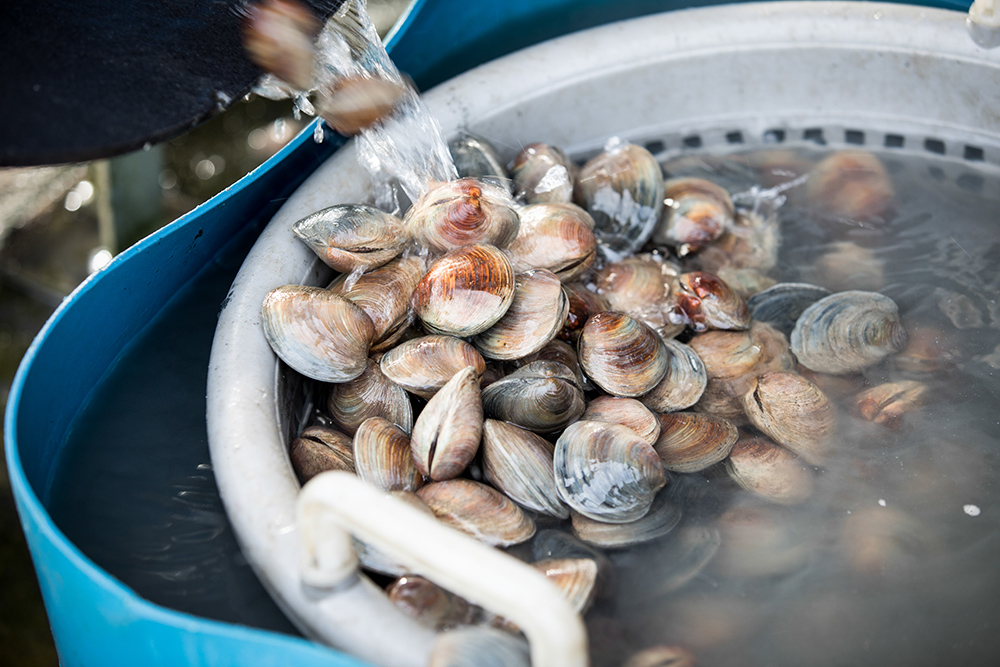By Paul Thomas
and Gary Wade
University of Georgia
When the temperature drops below 25 degrees Fahrenheit, pansy foliage will wilt and turn gray-green. This is normal.
On a winter day, the soil on the south-facing slope of a pansy bed can be 45 degrees while that on the northern side, 10 feet away, is frozen solid down to the root ball.
In that case, the roots can't absorb water from the frozen soil, so the plants on the north side of the bed dehydrate and die. Frozen soils and drying winds can spell disaster for pansies.
Pine-straw blanket
One of the best ways to save pansies from freeze injury is to apply pine straw 2 to 4 inches thick over the entire bed during extreme cold.This helps trap heat in the soil, prevents it from freezing and greatly reduces exposure to cold, drying wind. As a rule, do this only when you expect the temperature to drop below 20 degrees for a long time and expect dry, cold winds to blow. Always do it whenever the soil may freeze solid.
Carefully rake the pine straw off when the cold weather passes. Healthy plants can survive short times even in single-digit cold without protection.
When to feed
Fertilize pansies in late December, late January and late February. But don't use granular products. When the soil drops below 50 degrees, pansy roots don't take up the nitrogen commonly used in granular fertilizers.Instead, use a liquid fertilizer containing at least half its nitrogen in nitrate form.
Apply "pansy-vinca special," a high-nitrate, pansy-formula, 15-2-20 fertilizer, every 14 days through March 15. It works great for beginners and professionals alike. Just add it to a watering can full of water and water the bed thoroughly.
Potassium nitrate, calcium nitrate and even magnesium nitrate can provide good results in the winter, too.
How often you should fertilize pansies depends on the plants' vigor. Consult the label for recommended rates.
When you're feeding over the top of the plants, apply enough liquid not only to wet the foliage but to saturate the root zone 4 to 6 inches deep, too.
Ah, spring!
By March 15, soil temperatures should let you begin using granular fertilizers again. Using 200 parts per million of 20-20-20 or a slow-release granular fertilizer, as you would for summer annuals, should work well for pansies for the rest of the spring.Check the pH, too. Take a soil sample in early spring to test the soil again. The pH is best between 5.4 and 5.8. A pH above 5.8 can lead to boron and iron deficiency and maybe to more black root rot.
If the pH gets above 5.8, drench the bed with 1 to 3 pounds per 100 gallons of either iron sulfate or aluminum sulfate. When you do this, lightly rinse the pansies afterward to prevent any foliage injury. Do this every 10 days until the pH drops and stays between 5.4 and 5.8.
Too much soil moisture reduces oxygen and root growth. Try to keep pansies' soil slightly on the dry side of moist to harden growth before very cold weather.
Gratefully deadhead
Finally, keep the bed clean and free of decomposing flowers and leaves.Make frequent deadheading (removing spent blossoms) and cleaning a top priority. This prevents insect and disease problems while making the color display more striking. Biweekly deadheading is essential for a professional color display.
Trim lanky pansy stems from time to time, too, to encourage branching, compact growth and improved flowering.
If you do these things consistently, your pansy beds will rival those you see at the entrances of corporate buildings and botanical gardens.
(Paul Thomas and Gary Wade are Cooperative Extension horticulturists with the University of Georgia College of Agricultural and Environmental Sciences.)






